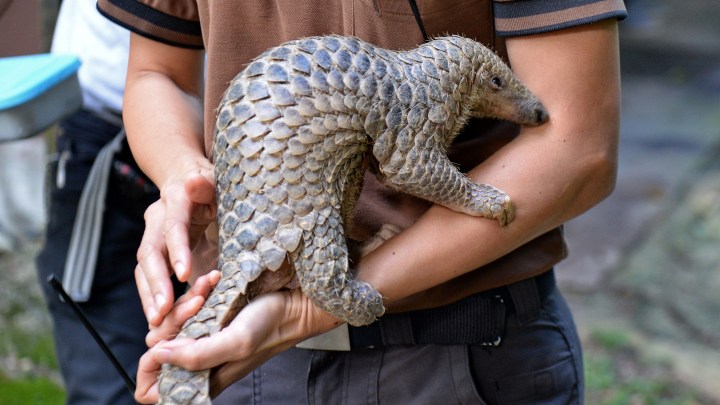
The pangolin black market is fueled by its scales, not its good looks
The pangolin black market is fueled by its scales, not its good looks

If you spend time browsing for cute animal photos on the internet, you may have stumbled across the pangolin. The exotic animal may be adorable, but several species are endangered. That’s because they are heavily trafficked for their scales.

Last month, the biggest ever seizure of pangolin scales was made in Singapore of 14.2 tons, or an estimated 36,000 pangolins.

National Geographic looks at the plight of the pangolin in its June 2019 issue.
Marketplace’s Kimberly Adams spoke to National Geographic senior editor Rachael Bale. Below is an edited transcript of their conversation.
Kimberly Adams: For people who have never seen or heard of a pangolin before, what is so special about them?
Rachael Bale: Pangolins are the world’s only scaly mammal. I like to describe them as a cross between a dinosaur and a golden retriever. There are eight different species. They can weigh anywhere from a couple of pounds to the giant pangolin … German shepherd-sized, but they are the most trafficked mammal in the world.
Adams: Why are they in such high demand?
Bale: Pangolin scales are in demand primarily for traditional Chinese medicine. They’re dried, ground into powder and used to supposedly cure anything from lactation difficulties to arthritis.
Adams: There’s not a ton of economic data on this particular market for pangolin scales and trafficking of pangolins. Why is it so hard to get that information?
Bale: The wildlife trade, in general, is just like any other black market trade. Most of it isn’t recorded. So right now all we can really go off of to understand the scale of it is seizure data — how much police actually intercept — and that’s estimated to maybe be about a quarter of all trade.

Adams: Some of the behaviors of the pangolin, which I learned about from your article — that they’re nocturnal, they don’t interact much with people — how does that complicate efforts to cut down on poaching?
Bale: Because their main defense is to roll up into a ball, it’s really easy for a poacher just to walk up and grab them. And because they are really hard to find, that means the people who are best positioned to do that are typically hunters who live in rural areas. And the problem is that most of these communities are very poor. There aren’t many resources, and there aren’t many alternative livelihoods to hunting. And so if you catch a pangolin, that could serve as your income for an entire month or longer once you sell it up the supply chain. So what’s really needed to try to crack down on the poaching side of things is for community economic development, for capacity-building on the ground to try to help people find alternative livelihoods that are less destructive to wildlife.
There’s a lot happening in the world. Through it all, Marketplace is here for you.
You rely on Marketplace to break down the world’s events and tell you how it affects you in a fact-based, approachable way. We rely on your financial support to keep making that possible.
Your donation today powers the independent journalism that you rely on. For just $5/month, you can help sustain Marketplace so we can keep reporting on the things that matter to you.


















